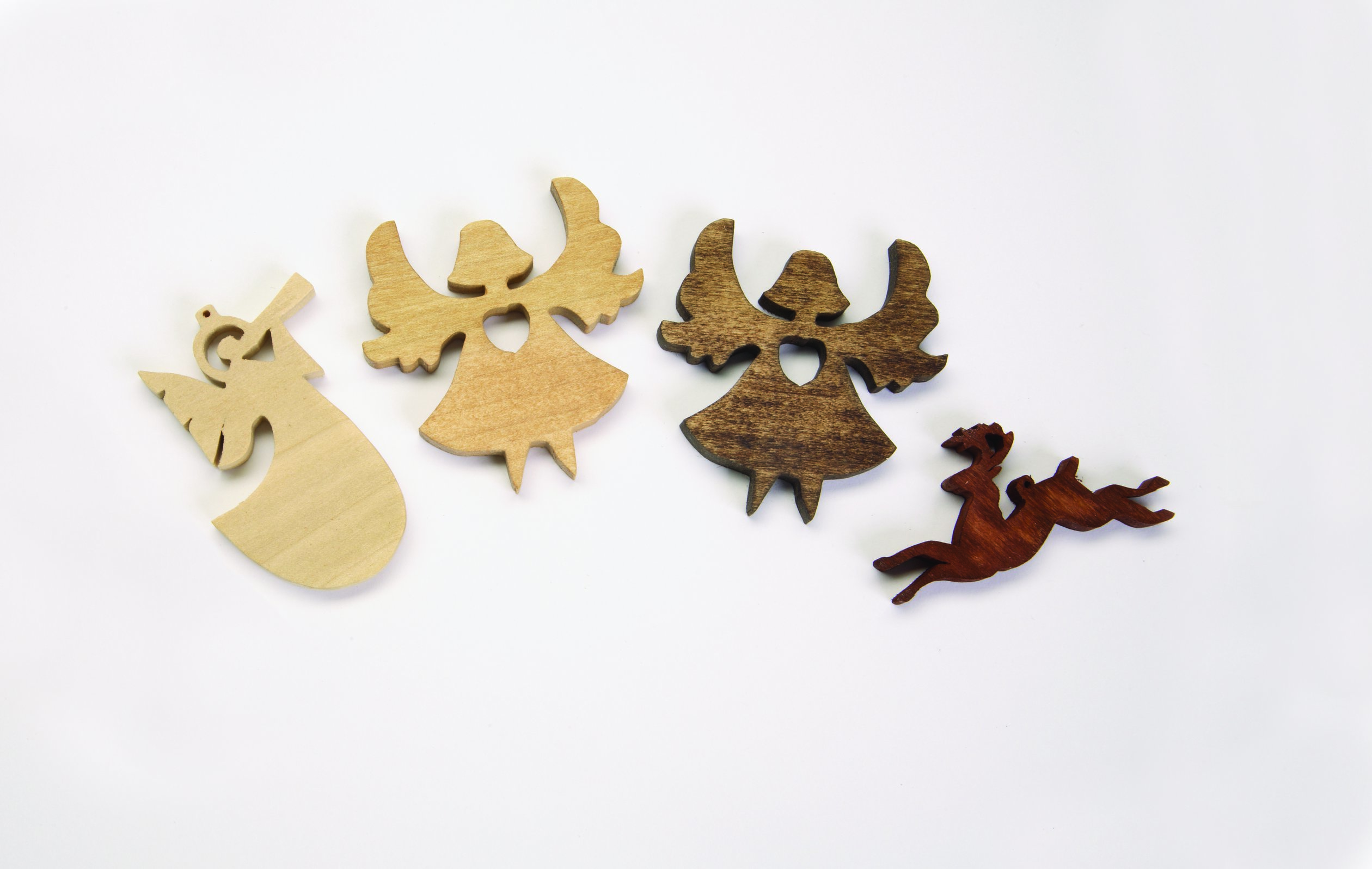Don’t let the number of oak species confuse you
by Bob Duncan
Ask five different suppliers for oak, and all five may offer you a different species. Even if you are specific and ask for red oak or white oak, you may still get several different species of oak of varying color depending on what part of the country you are in. All of them will feature the distinctive, open-grain pattern, but the different species vary in workability and wood stability.
White oak has been the long favorite of woodworkers. Carpenters, cabinet-builders, and scrollers alike wax poetically about a piece of quartersawn white oak where the grain and color are just perfect. Due to its durability and the distinctive ray patterns of the grain, white oak is a popular wood for furniture, cabinets, and tables.
The color of red oak makes it a good choice when you want a warm, rich wood. The shorter ray patterns in the grain are often less attractive than its lighter counterpart.
According to the Illustrated Book of Trees, by William Carey Grimm, oak trees are in the same family as beech and hickory trees. The general category of oak can be broken down into two standard categories: red and white. Red oak, like the name implies, has a reddish tone to the wood, while white oak tends to be tan or brown in color.
In all, there are 10 different species of oak trees that fall into the red oak category. Of the 10, cherry bark oak is the most prized for its appearance and resistance to warping and checking. Northern red oak, shumard oak, water oak, and laurel oak are all acceptable species for woodworking. Avoid scarlet oak, black oak, southern red oak and willow oak. While some suppliers may market these four as red oak, they tend to warp, twist, and check.
True white oak is the most popular species in the white oak category. Chestnut oak, also sold as white oak, tends to be more dense and hard, but is just as resistant to checking and warping as white oak. Bur oak, post oak, swamp white oak, and swamp chestnut oak are also referred to as white oak, but the quality is not as high.
Working with Oak
Oak cuts and sands well. It is a relatively dense hardwood. According to the Woodworker’s Pocket Reference by Charlie Self, white oak is slightly harder than red oak. White oak comes in at 1360, and red oak at 1290 on the Janka hardness scale. Both types glue well and accept screws and nails well. If you plan to screw two pieces of oak together, drill a pilot hole. Do not use ordinary steel screws or nails. Oak is high in tannin, and the wood around steel screws or nails will react to produce a black stain. This black stain can be used as a finish (see Shop-made Ebonizing Stain, Fall 2006, Issue #24), but it will look out of place on a natural finish. Use stainless steel or brass screws, or epoxy coated nails, to avoid the discoloration.
Use caution when cutting 1/4“-thick oak or thinner; the open grain makes it more likely to snap along the grain. Try to avoid positioning delicate bridges across the grain.
Finishing Oak
Oak requires a bit more work when finishing. It sands well and doesn’t load up the sandpaper, but the attractive, open grain must be filled or your finished surface will feel rough. There are two ways to fill the grain.
The first it to keep applying a building finish, such as a varnish, and sanding it down until you have filled the grain and have a level finish. This is time consuming.
The second method is to apply a grain filler. A grain filler is a paste-like compound designed to fill in the grain quickly; usually with one application. This cuts down the finishing time, but grain fillers only come in a few colors. Most grain fillers can be colored to match the wood, but it does takes some trial and error. Some woodworkers use a contrasting color of grain filler to accent the grain.
Summary
Oak is a classic wood for most projects. It is durable and attractive, but the open grain makes pattern positioning and finishing more of a challenge.
 This article was first published in Scroll Saw Woodworking & Crafts Holiday 2007 (Issue 29).
This article was first published in Scroll Saw Woodworking & Crafts Holiday 2007 (Issue 29).
Discuss this material on the Scroll Saw Woodworking & Crafts forums.







